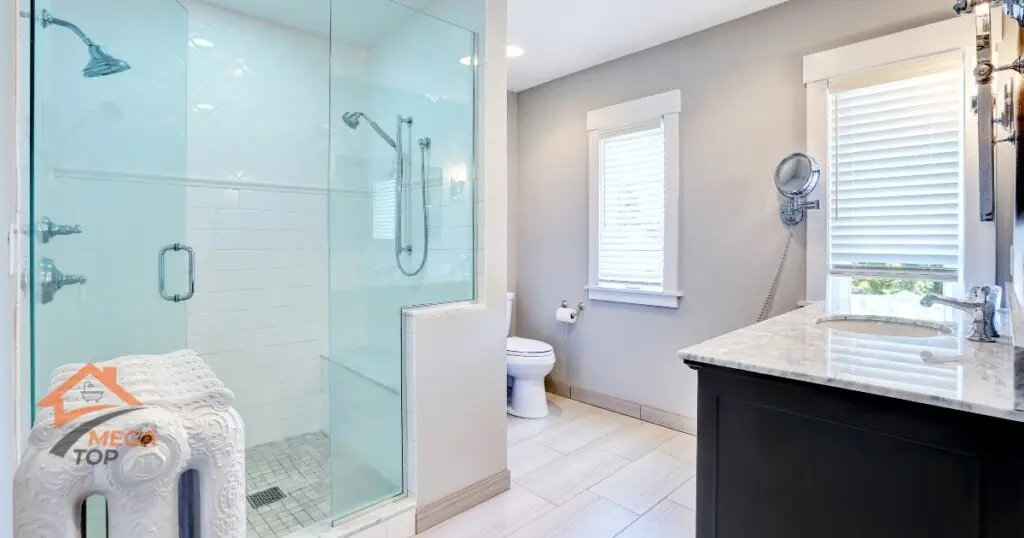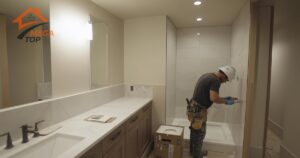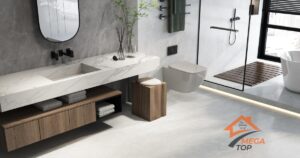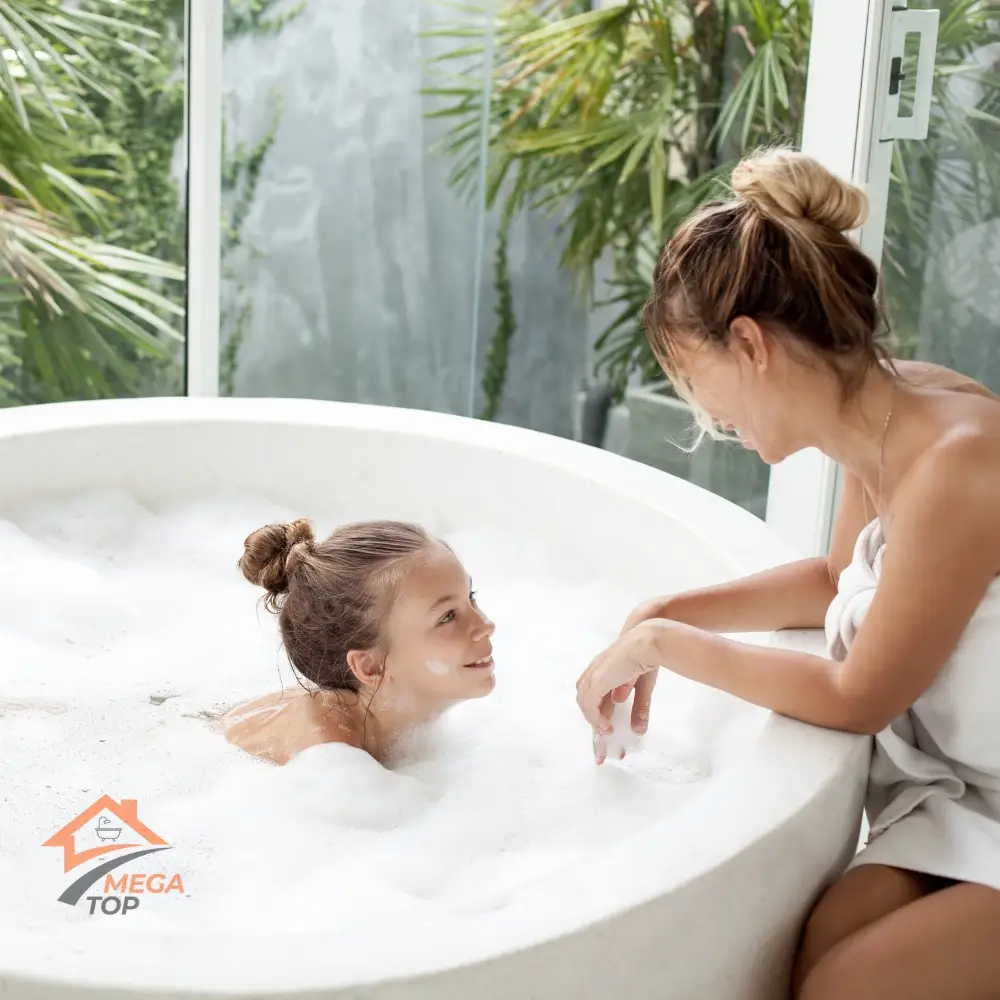Introduction: The Appeal of Walk-In Showers
Walk-in showers have become a popular choice for modern bathroom designs. Their sleek, open look and ease of access make them a stylish and functional option for homeowners. Walk-in showers are often associated with luxury, and they can provide a spa-like experience. However, despite their appeal, there are disadvantages that potential installers should be aware of, including walk-in shower cost, maintenance challenges, and more.
1. Walk-In Shower Cost: Installation and Upkeep
Higher Installation Costs
The cost of installing a walk-in shower can be significantly higher than that of a traditional bathtub or enclosed shower. This is due to several factors, such as the custom design, materials, and labor required. Walk-in showers often require professional waterproofing, which adds to the cost.
- Custom designs and materials: The lack of standard-sized pans means that many walk-in showers are custom-built, which increases both material and labor costs. High-quality tiles, glass panels, and waterproof membranes are typically more expensive than the materials used for a standard bathtub installation.
Comparing Walk-In Shower vs. Traditional Tub Costs
On average, a walk-in shower installation can range from $5,000 to $15,000, depending on the materials used and the complexity of the design. In contrast, a traditional bathtub or shower enclosure usually costs between $2,500 and $7,000. This makes walk-in showers a more expensive option upfront.
Ongoing Maintenance Costs
Walk-in showers require more frequent cleaning and maintenance compared to traditional enclosed showers or bathtubs. The open design leaves more surfaces exposed to water, soap scum, and grime.
- Frequent cleaning: Walk-in showers, especially those with large glass panels, need regular cleaning to avoid the buildup of soap scum and hard water stains.
- Repairing water leaks: Improper installation or gradual wear can lead to water leaks, which may result in costly repairs if not addressed promptly.
2. Water Leaks and Drainage Issues
Improper Drainage Problems
One of the most common issues with walk-in showers is improper drainage. Without the right slope or a well-placed drain, water can pool on the floor, creating slippery surfaces and increasing the risk of accidents.
- Water pooling: If the shower floor isn’t sloped correctly, water may not drain efficiently. This can lead to puddles forming, which not only create a mess but also increase the chances of slipping.
Common Signs of Drainage Problems in Walk-In Showers
If you notice standing water after each shower or find that your bathroom floor is consistently wet, it’s a sign that the drainage system may need adjustments. Regular inspection of the floor and drain system is important to avoid long-term issues.
Water Leaks Due to Poor Sealing
A major concern with walk-in showers is the potential for water leaks. Poorly installed or inadequate waterproofing can result in water seeping out of the shower area, damaging nearby flooring and walls.
- Leaking onto the bathroom floor: Inadequate seals or gaps around the shower base can lead to water escaping the shower area, especially in open designs without a threshold.
Waterproofing Tips for Walk-In Showers
To prevent leaks, it’s essential to ensure that the shower area is properly waterproofed. Using high-quality waterproof membranes and sealing around the edges of the shower with silicone caulk can help keep water contained.
3. Heat Loss in a Walk-In Shower
Lack of Enclosure Causes Heat Loss
Walk-in showers, especially those with open or frameless designs, tend to lose heat faster than enclosed showers or bathtubs. The lack of barriers allows warm air to escape, making it more difficult to maintain a comfortable temperature while showering.
- Cooling effect: The open design means that air circulates freely, which can result in a less comfortable showering experience, especially in colder months.
How to Minimize Heat Loss in a Walk-In Shower
There are several ways to reduce heat loss in a walk-in shower. Installing a partial glass enclosure or a shower screen can help retain heat. Heated floors or towel warmers can also make the bathroom more comfortable and compensate for the cooler air.
4. Slip Hazards and Safety Concerns
Slippery Floors Without a Threshold
Without the barrier of a shower curb or tub edge, water can easily spread across the bathroom floor. This increases the risk of slips and falls, especially on smooth tile surfaces.
- Water spreading: Because there is no threshold to contain the water, it often splashes out onto the surrounding floor, which can make the entire bathroom floor slippery.
Anti-Slip Flooring Solutions for Walk-In Showers
To minimize slip hazards, it’s important to use anti-slip flooring both inside and outside the shower area. Tiles with textured surfaces or mats designed to reduce slipping can improve safety.
Accessibility vs. Safety Trade-offs
While walk-in showers are praised for their accessibility, especially for elderly individuals or people with mobility issues, the open design can still present safety risks without proper precautions.
- Safety features: Installing grab bars, slip-resistant flooring, and benches can make walk-in showers both accessible and safe.
5. Space and Privacy Concerns
Limited Privacy in Open Designs
Walk-in showers often feature open or glass designs, which can make them less private compared to traditional enclosed showers or bathtubs with curtains.
- Exposed showering area: The lack of a curtain or frosted glass may make some homeowners feel exposed, especially in shared bathrooms.
Design Adjustments to Improve Privacy in Walk-In Showers
Consider using frosted glass panels, half-walls, or strategically placed tiles to increase privacy while maintaining the open feel of a walk-in shower.
Space Constraints in Smaller Bathrooms
Walk-in showers often require more space than traditional tubs or enclosed showers. In smaller bathrooms, installing a walk-in shower may reduce available space for storage or other fixtures.
- Loss of storage space: The larger footprint of a walk-in shower can take up valuable real estate in compact bathrooms, making it harder to fit additional cabinets or shelves.
Ideal Bathroom Layouts for Walk-In Showers
In smaller bathrooms, opt for space-saving designs such as corner walk-in showers or wet rooms, which combine the shower area with the rest of the bathroom.
6. Resale Value Considerations
Walk-In Shower vs. Bathtub in Resale
While walk-in showers are often seen as luxurious and modern, they may not be appealing to every homebuyer. Families with young children, for instance, might prefer a bathtub over a shower-only bathroom.
- Potential impact on resale: Homes without at least one bathtub may have reduced appeal, especially in family-oriented markets where bathing young children is a priority.
Balancing Luxury and Practicality for Future Buyers
If you’re considering selling your home in the future, maintaining at least one bathtub in the house may be a good compromise to ensure broad market appeal.
Walk-in showers offer a sleek and modern look, but it’s important to weigh the disadvantages before committing to the installation. From walk-in shower cost to maintenance issues, being aware of potential downsides can help you make an informed decision. For expert advice or help with installation, contact a professional contractor today!
FAQ
Yes, custom walk-in showers tend to cost more due to materials and design complexity.
Poor waterproofing or sealing can lead to water leaks and damage, so proper installation is crucial.
Install anti-slip tiles, grab bars, and proper drainage to reduce slip hazards.
Yes, open designs allow heat to escape more quickly, but heated floors or shower screens can help.
It depends on the market; homes without bathtubs may be less appealing to families with young children.





